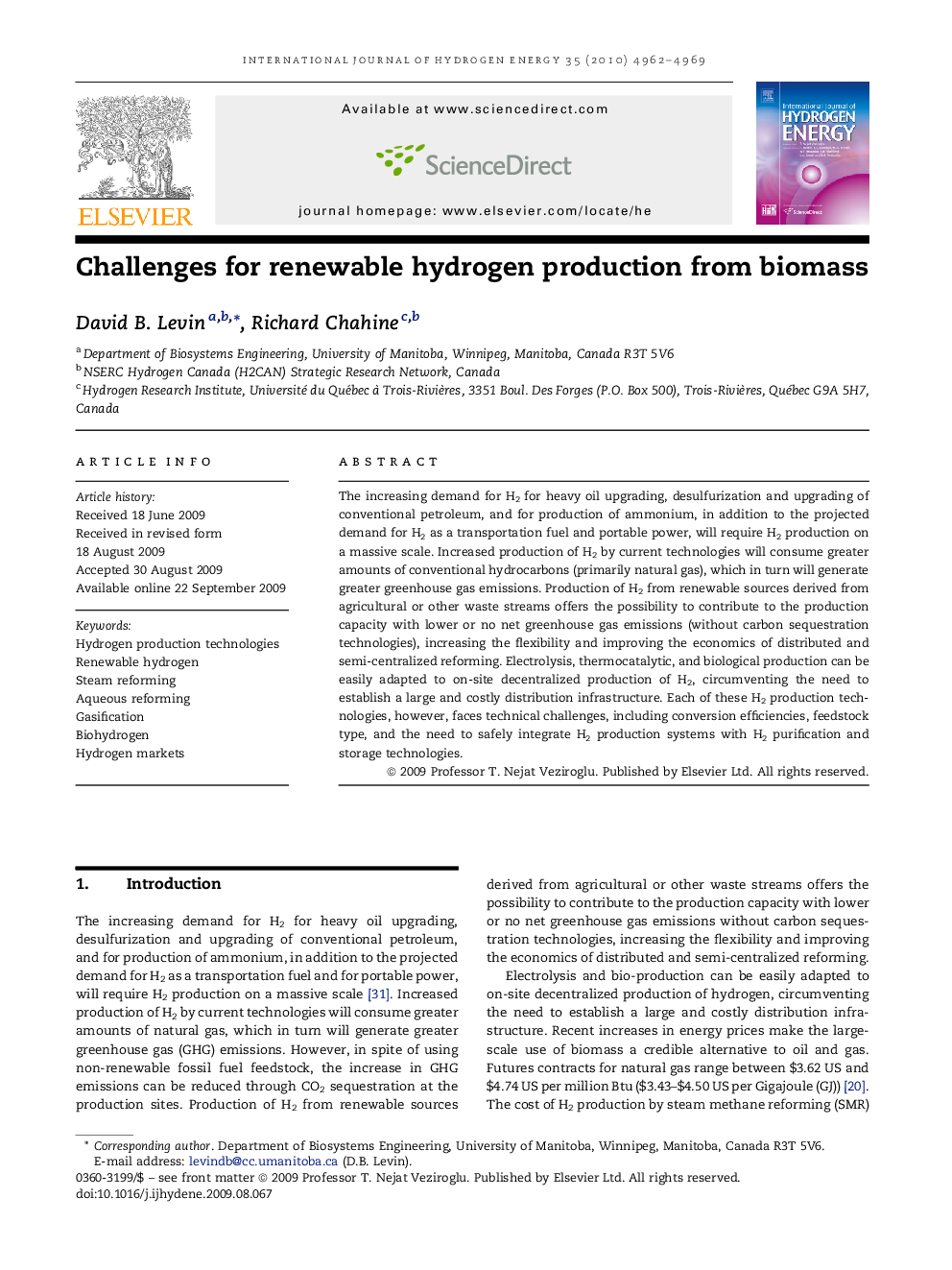| Article ID | Journal | Published Year | Pages | File Type |
|---|---|---|---|---|
| 1282842 | International Journal of Hydrogen Energy | 2010 | 8 Pages |
The increasing demand for H2 for heavy oil upgrading, desulfurization and upgrading of conventional petroleum, and for production of ammonium, in addition to the projected demand for H2 as a transportation fuel and portable power, will require H2 production on a massive scale. Increased production of H2 by current technologies will consume greater amounts of conventional hydrocarbons (primarily natural gas), which in turn will generate greater greenhouse gas emissions. Production of H2 from renewable sources derived from agricultural or other waste streams offers the possibility to contribute to the production capacity with lower or no net greenhouse gas emissions (without carbon sequestration technologies), increasing the flexibility and improving the economics of distributed and semi-centralized reforming. Electrolysis, thermocatalytic, and biological production can be easily adapted to on-site decentralized production of H2, circumventing the need to establish a large and costly distribution infrastructure. Each of these H2 production technologies, however, faces technical challenges, including conversion efficiencies, feedstock type, and the need to safely integrate H2 production systems with H2 purification and storage technologies.
